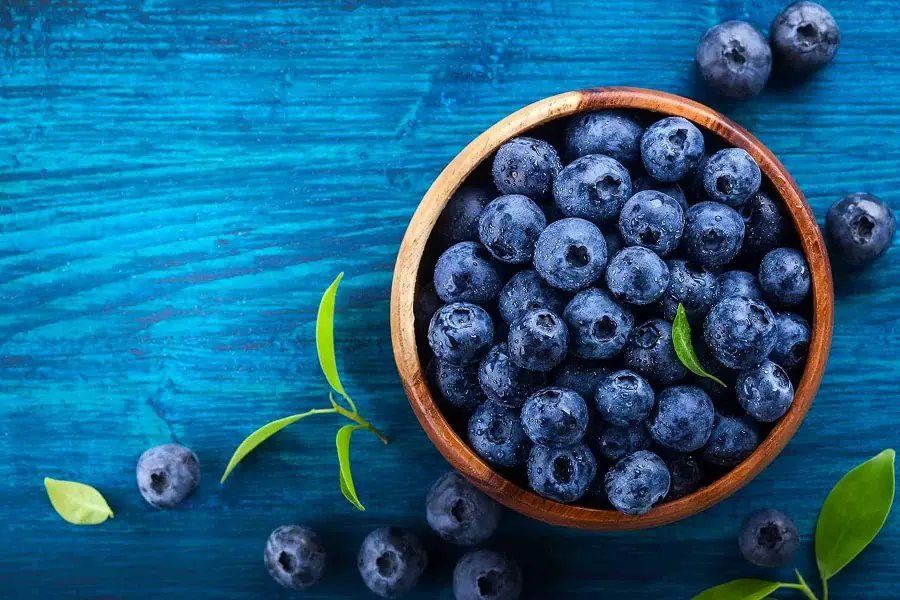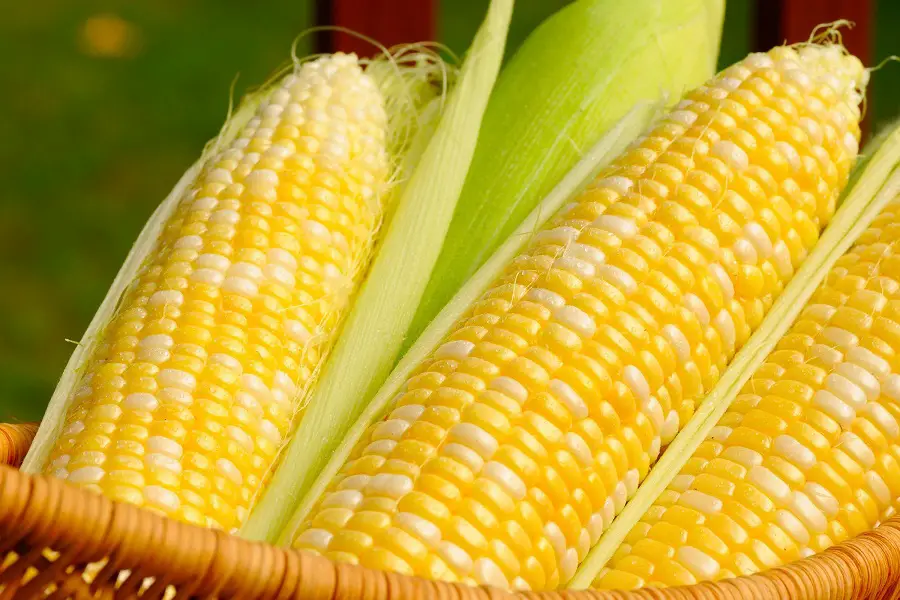Growing carrots hydroponically might sound challenging, but if you do your research and invest time and effort to do it the right way, you’ll master the art of gardening.
When it comes to hydroponic growing, carrots are probably not the first vegetable that comes to mind. Most people usually go for tomatoes or lettuce.
However, it’s entirely possible and not at all difficult to grow carrots in a hydroponic environment.
In the following paragraphs, we will discuss how to get started, issues to watch out for, and how to grow nutritious hydroponic carrots successfully. Let’s take a look.
Carrot Characteristics
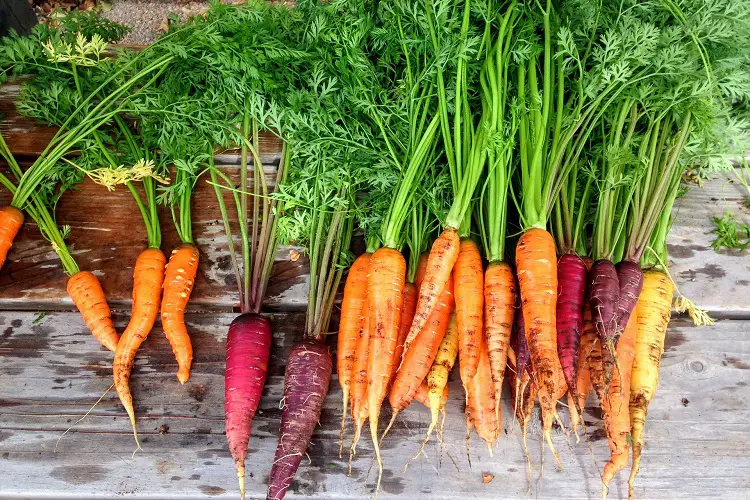
Carrots can be orange, white, yellow, or purple. They are a member of the Apiaceae family, including celery and parsley.
Carrots are nutrient-dense, rich in vitamins and minerals, and have a variety of health benefits.
For instance, carrots are a good source of beta-carotene, which is converted by the human body into vitamin A. Vitamin A is vital for healthy eyesight, boosting your immune system, and helping your cells grow.
Carrots are also a good source of fiber, which promotes digestive health. Additionally, some studies have shown that eating carrots reduces the risk of certain cancers.
Benefits of Growing Carrots Hydroponically
Growing carrots in a hydroponic system have many benefits like:
- Hydroponic gardens are smaller and more compact than traditional gardens, making them ideal for those with limited space.
- Hydroponic systems require less water and fertilizer than soil-based gardens.
- Carrots grown in hydroponic systems are cleaner and have fewer pests.
- Carrots grown hydroponically have a sweeter flavor than those grown in soil.
Problems to Watch out for
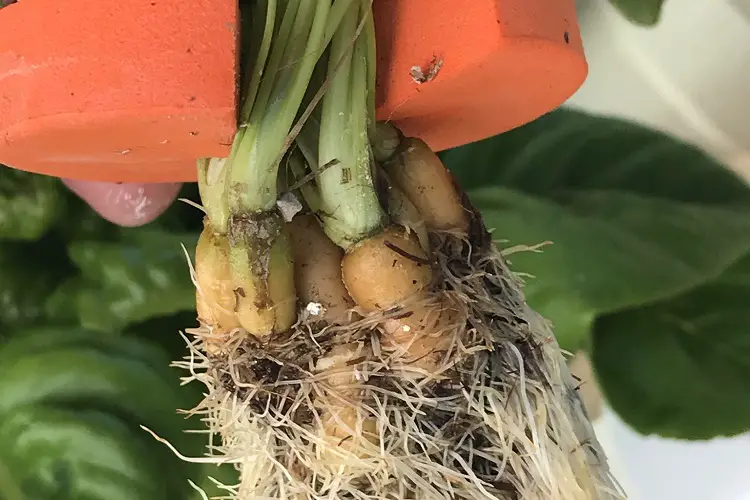
Growing carrots in a hydroponic system can be a great way to produce a large crop with minimal effort.
However, there are some things to watch out for to prevent deformed carrots and save yourself from significant problems. Those include:
Poor Root Development
Carrots can be challenging to grow, and one of the most common problems is poor root development. Several factors can cause this, including compacted soil, excessive nitrogen levels, or damage to the roots.
To promote healthy root growth, you must loosen the soil before planting and ensure that the plants have plenty of room to spread out.
You also need to check the nitrogen levels and water the plants more during dry periods. With proper care, it is possible to produce healthy carrots with solid roots.
Leaf Yellowing
Many gardeners have experienced the frustration of watching their carrots turn yellow and wilt, despite providing them with plenty of water and sunlight.
This condition, known as leaf yellowing, is caused by several factors, including pests, disease, and a lack of nitrogen.
Nitrogen is an essential nutrient for plants. It helps them to grow and stay healthy. If there isn’t enough nitrogen in the soil, the plants’ leaves turn yellow and die.
Another common reason why leaves turn yellow is because of pests. Aphids, whiteflies, and other insects can suck the nutrients out of leaves, causing them to turn yellow and wilt.
Finally, diseases such as Alternaria can also cause leaf yellowing in carrots. Gardeners dealing with leaf yellowing should consult a plant expert to determine the cause and find the best solution.
Pests and Diseases
Carrots are also susceptible to a number of pests and diseases.
One of the most common problems is black rot, which causes the roots to develop dark spots and eventually wither. Other diseases include white rot, root knot, and fusarium wilt.
In addition to diseases, carrots are often attacked by pests such as aphids, carrot rust fly larvae, and root maggots. To protect your carrot crop, it is crucial to be on the lookout for signs of pests and disease.
Remove any affected plants promptly and practice good crop rotation to deal with pests and diseases.
Getting Started
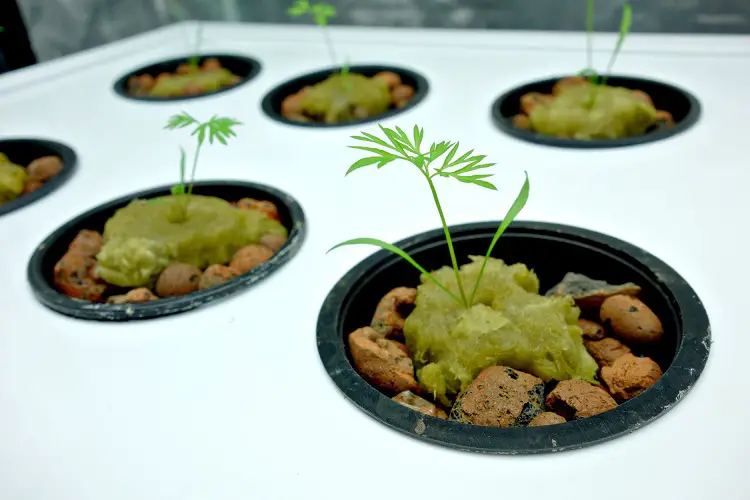
Growing carrots on a hydroponic farm is a great way to jump-start the growing season.
Here are a few things you need to know to get started:
- You need to obtain some carrot seeds. You can find these at most garden centers, local hydroponic stores, or online.
- Second, fill your hydroponic system with enough water to cover the carrot seeds.
- Third, add a nutrient solution to the water. This will provide the carrots with the nutrients they need to grow.
- Finally, place the seeds in the hydroponic system and turn on the lights. The carrots should germinate in about two weeks.
After that, you can start harvesting them!
Growing Carrots Hydroponically – Must-Knows
Carrots are a delicious and nutritious addition to any diet, and they’re surprisingly easy to grow hydroponically. All you need is a container, a growing medium, some water, and some light.
To start, fill your container with water and add a nutrient solution. Then, add your carrot seedlings or seeds. Make sure they have enough space to spread out and keep the water level consistent, so they don’t dry out.
Once they start to grow, provide them with plenty of light. You can use natural sunlight or artificial lighting, but ensure your carrots get at least eight hours of light daily.
With a bit of patience and care, you’ll be able to enjoy fresh carrots all year round!
Types of Carrots
While many different types of carrots can be grown hydroponically, some varieties are better suited to this cultivation method than others.
Imperator
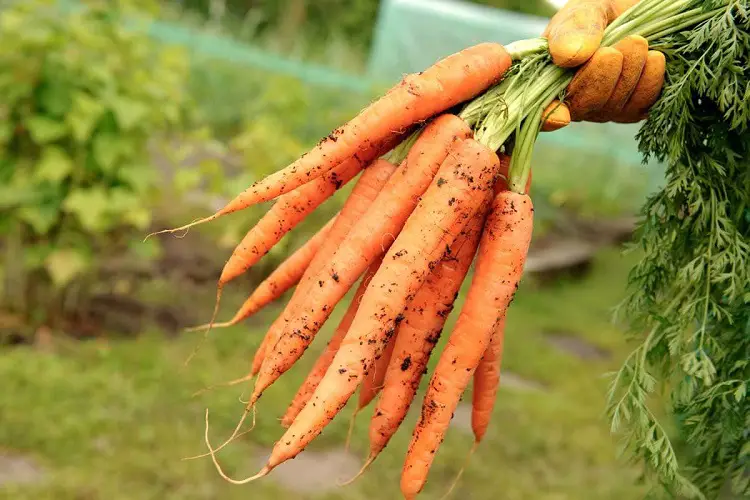
The Imperator carrot is widely considered the standard for quality and flavor. Originally developed in the early 1900s, the Imperator has been hailed for its long, straight roots and deep orange color.
Today, the Imperator is still one of the most popular carrot varieties grown commercially worldwide.
While often seen as the traditional carrot, the Imperator is actually a relatively new variety. However, its superior flavor and quality have made it a staple in gardens and kitchens.
Danvers
Danvers carrots are roughly six inches long and have a deep orange color. They are named after the town of Danvers, Massachusetts, where they were first cultivated in the 1820s. Today, they are widely grown across North America and Europe.
Danvers carrots are known for their sweet flavor and crisp texture. They are often used in soups, stews, and salads.
Chantenay
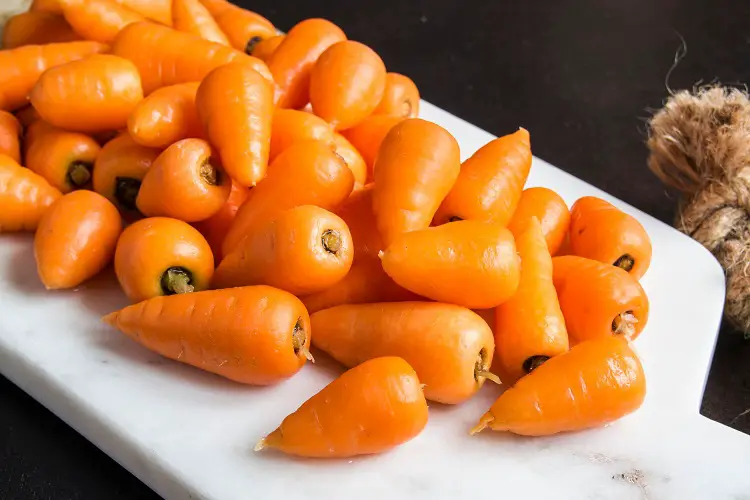
The Chantenay carrot is a popular variety often used in soups and salads. It’s characterized by its short, stubby shape and deep orange color.
Chantenay carrots are also relatively sweet and crisp, making them a good choice for snacking. While they were initially developed in France, Chantenay carrots are now grown worldwide.
Regarding nutrition, Chantenay carrots are an excellent source of beta-carotene and many vitamins and minerals. They also contain antioxidants that protect against various diseases.
Nantes
Named for the French city of Nantes, this carrot is characterized by its cylindrical shape and deep orange color.
Unlike other carrots, typically harvested in the fall, Nantes carrots can be harvested all year-round, making them perfect for a wide range of dishes, from soups and stews to salads and sides.
In addition to their culinary versatility, Nantes carrots are also packed with nutrients. They are an excellent source of Vitamin A, which is essential for vision and immunity, and they also contain high levels of fiber, which helps regulate digestion.
With enough water and nutrient, you can grow all of the above-mentioned types of carrots in a hydroponic system.
Why do Carrots Need a Deep Grow Tray?
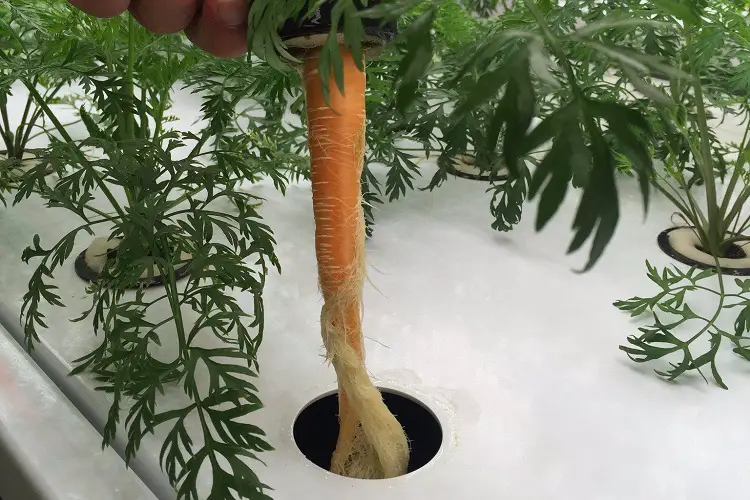
Like all root vegetables, carrots need deep, loose soil to grow.
A grow tray is a gardening tool that can provide an ideal growing environment for carrots. The tray is typically about 12 inches deep and has multiple compartments for planting seeds or seedlings. This allows the roots to spread evenly and grow deeper into the soil.
While deep grow trays are not essential for growing carrots, they can help produce healthier, more robust plants. Carrots grown in shallow soils are more likely to be stunted and have smaller root systems.
In addition, deep grow trays help protect carrot plants from wind and heavy rains, which can damage shallow-rooted plants.
Ultimately, using a deep grow tray is a must-have to ensure a successful carrot crop in hydroponic growing.
Carrot Transplant and Care
Carrots need to be transplanted when they are about 4-6 inches tall. The best time to do it is in the spring after the last chance of frost has passed.
Here’s how to transplant a carrot in hydroponic conditions:
- Choose a suitable location for your carrot plants. They need plenty of sunlight and should be protected from strong winds.
- Start with healthy transplants. If you are growing from seed, make sure they are fresh and of good quality.
- Plant the transplants at the correct depth. Carrots need to be planted relatively deep to develop correctly.
- Water regularly and evenly. Carrots need consistent moisture to produce good results.
- Fertilize monthly with a high-quality liquid fertilizer designed for hydroponics.
How Long Does it Take to Grow Carrots Hydroponically?
With proper care, you can grow hydroponic carrots in about 60 days. Some quick-growing varieties can be harvested in as little as 50 days, while others may take up to 70 days.
Remember, your crop won’t be successful if you don’t provide your carrots with a well-balanced nutrient solution, a consistent water supply, a warm environment, and plenty of light.
The Best time to Harvest Carrots
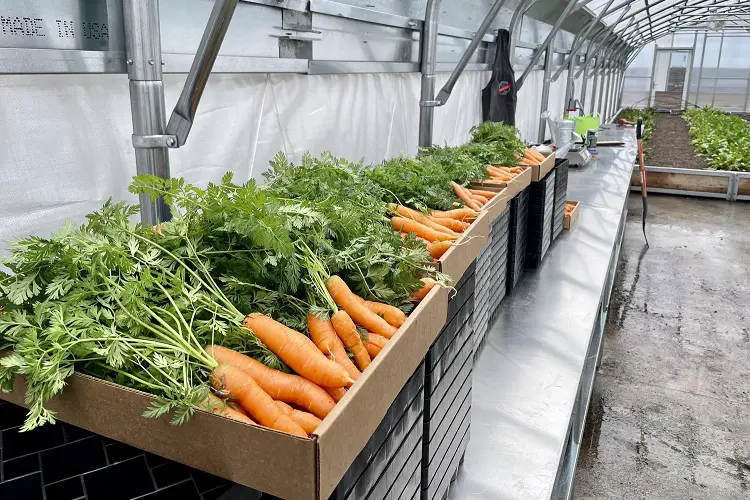
One of the advantages of growing carrots hydroponically is that they can be harvested year-round. Still, there are a few things to consider when it comes to harvesting your carrots.
Carrots take about 70 days to mature. If you want to harvest baby carrots, you can start picking them as early as 50 days. Full-sized carrots are best to wait until they’re at least 70 days old.
Carrots take longer to mature if the weather is cool and moist. However, they may be ready earlier than usual if the weather is hot and dry.
To get the best flavor, it’s best to harvest carrots in the morning when they are fresh and crisp.
Conclusion
Good news, gardeners – you can grow hydroponic carrots, and it’s not that difficult.
As explained in the article, you can enjoy fresh and nutritious carrots all year round with proper care, watering, and light.
Happy gardening, everyone!



